“Week 5”: Expensive Machinery
Eugene j -
Hey Everyone! Here is the special post I alluded to, but in what case would I have known that it would be special ahead of time, and what is it about?
This is an image of a 2008 Varian 21iX Linear Accelerator.
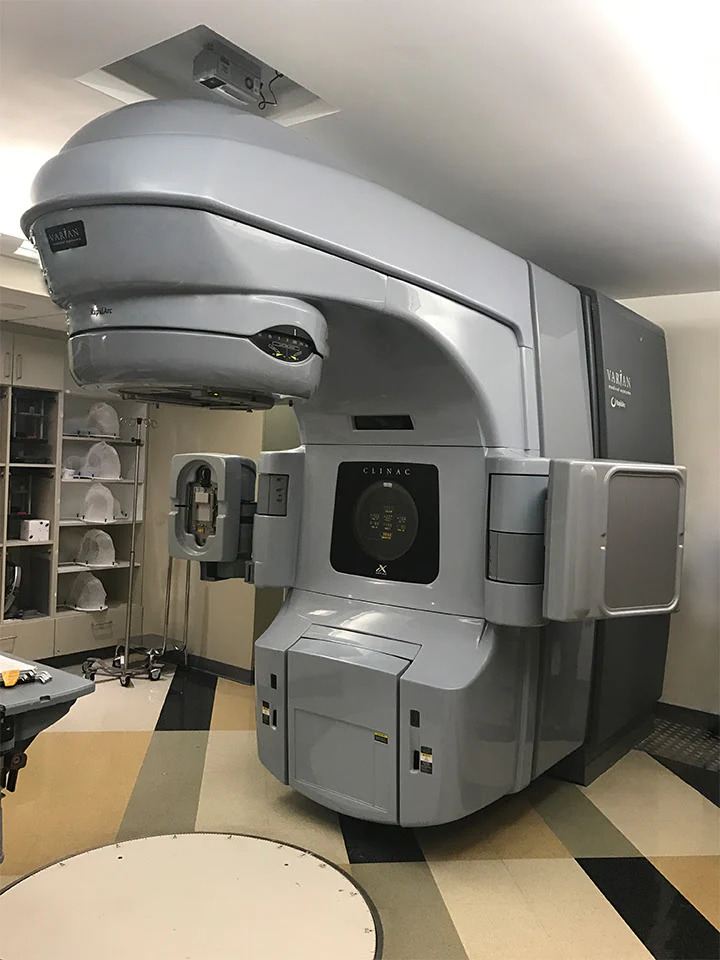
We bought our linear accelerator in 2013, and after 12 years of running, it is at the end of its lifespan. We will be getting a new linear accelerator. The other site’s accelerator still has a few more years of use, but what if a part breaks down? We likely can’t buy the part, but we need a replacement.
We took apart our linear accelerator for parts.
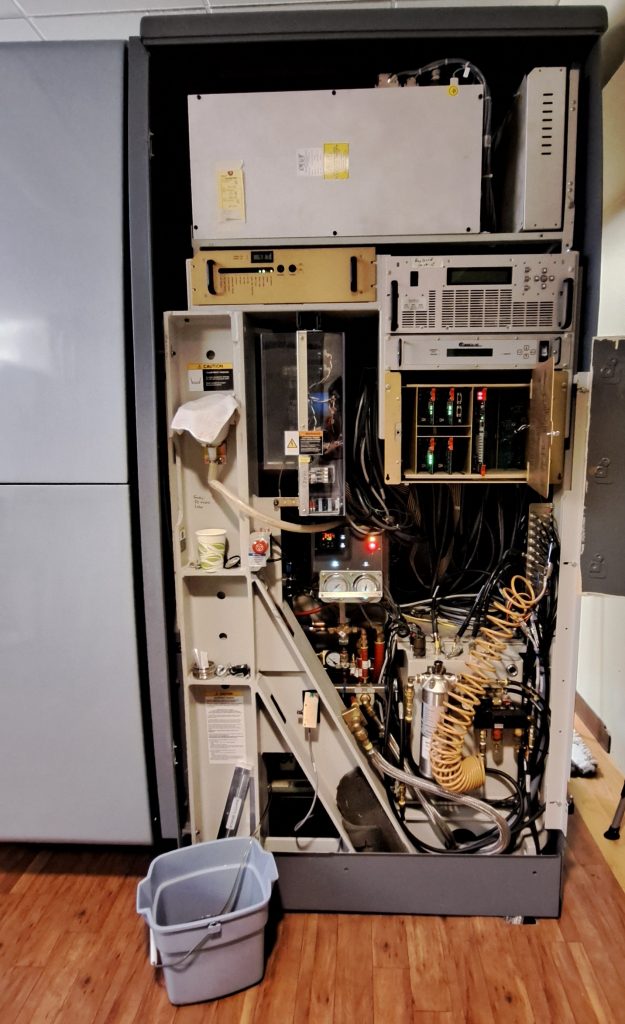
Look inside and witness forbidden technology.
(And yes, this will be another very technical post now with lots of pictures and some videos.)
I’m sorry for the weird formatting and font sizes. The post looks very different from my editing POV. I tried to fix some of the problems.
First, it can spin.
The Varian rotates around a point with an accuracy of less than a millimeter.
For the internal parts of the Varian.
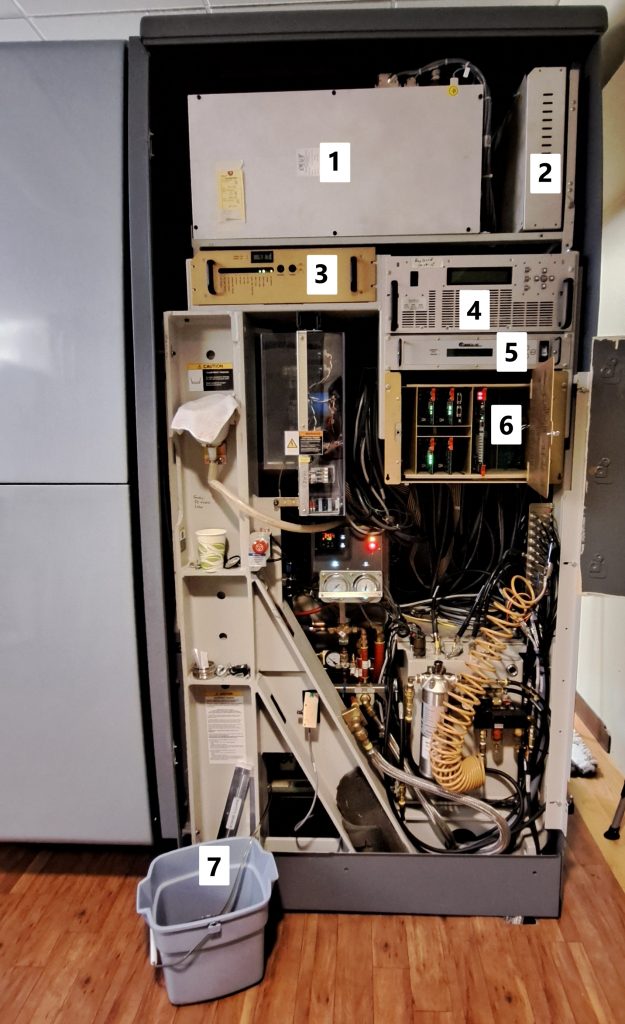
This is the right side of the Varian. I have numbered the parts whose function I understand.
1. This is the main generator. It keeps all essential functions running even if the building loses power. The Varian still needs active building power sent to run the spinning and the linear accelerator, but it will never just lose power mid-function.
2. This is the CPU for the generator.
3. This routes power from the generator to making and keeping a vacuum. The linear accelerator beam must run through a vacuum to avoid collisions with air molecules.
4. This routes microwaves into another part on the other side of the machine to be amplified.
5. This is the RF (radio frequency) driver. It generates electromagnetic waves, which are then amplified to make the linear accelerator beam.
6. This holds multiple sideways circuit boards to run 4 and 5.
7. This is a bucket that is draining out the coolant.
The rest of the wires and such do more stuff. I don’t know the exacts, but they are less specialized.

Here is a better view of the wires.
I presume the gauges and lit number screen are for the internal temperature and cooling system. The red number indicates that the cooling system is currently 39.6°C or 103.28°F out of a max temp of 40°C or 104°F. This is probably because we were draining the coolant.
Posting images and videos to the blog reduces the quality compared to my phone, so that is how I know that it is in Celsius.
Here is a closer look.
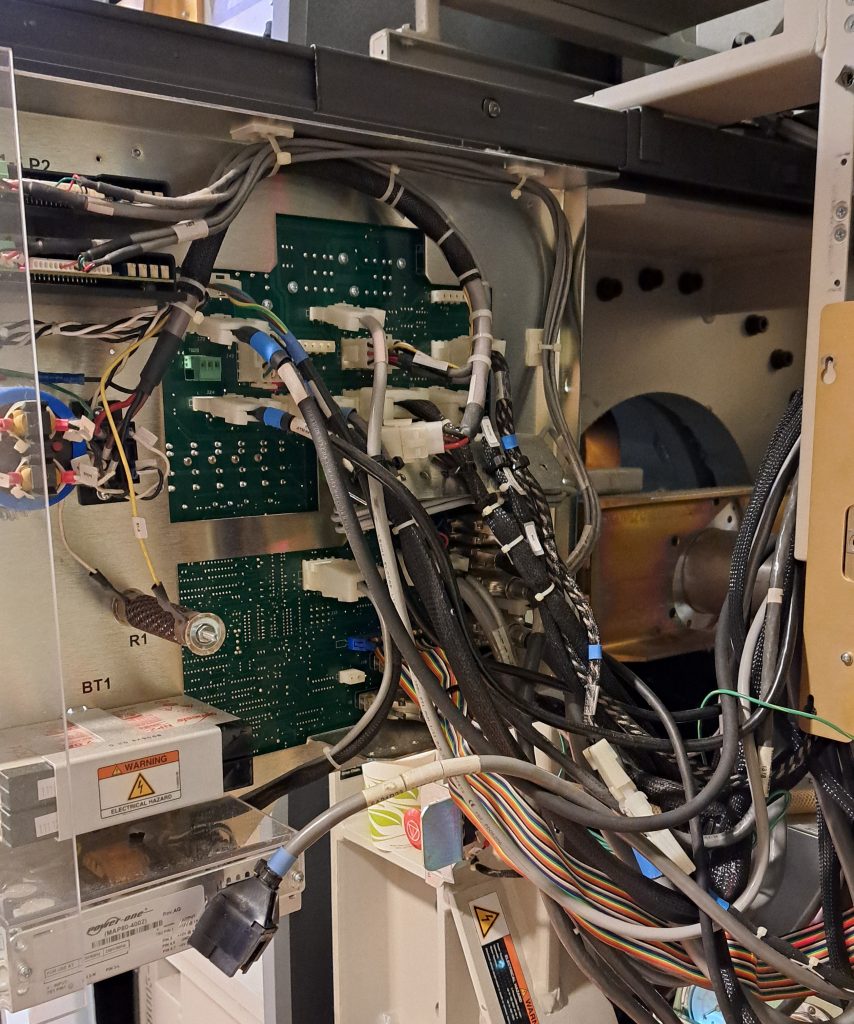

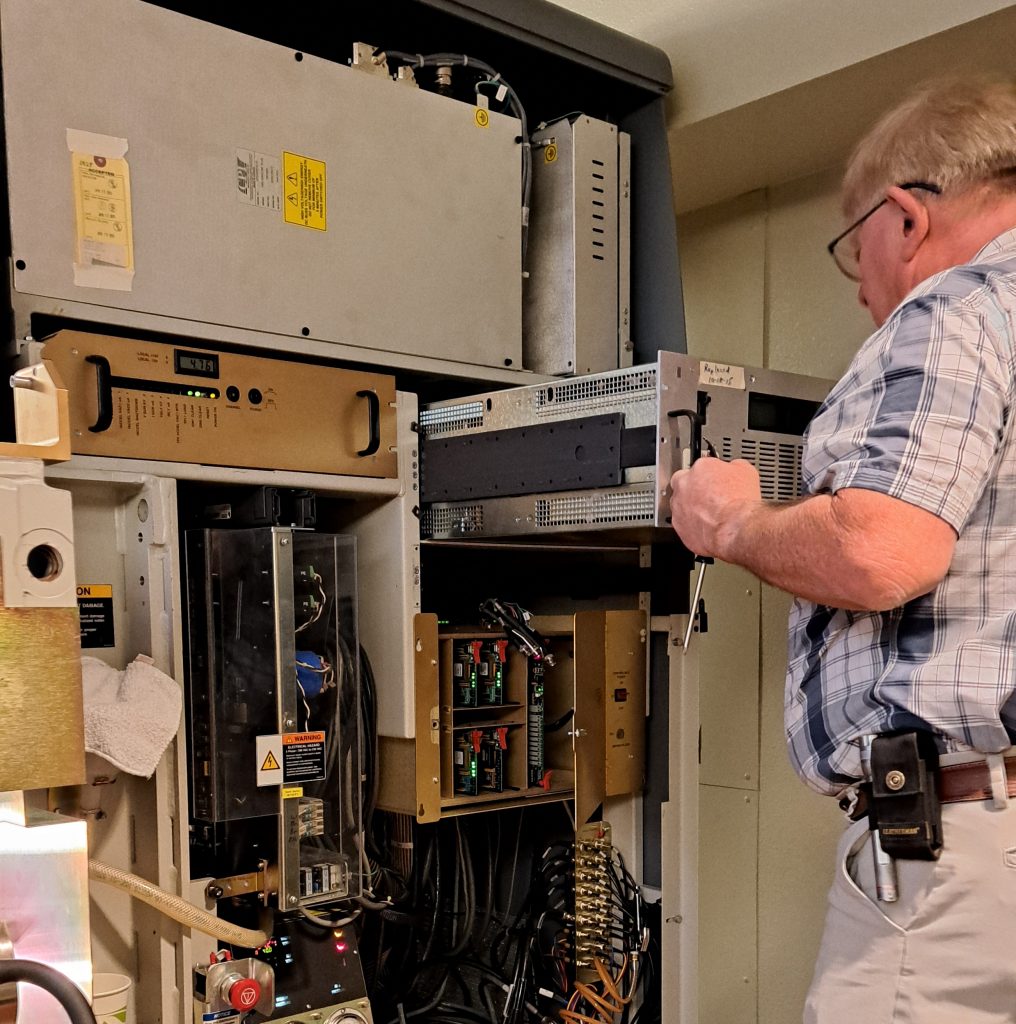
Here are the systems being pulled out. They have wires at the back that need to be disconnected before they can be rolled out from the railing that they are held in.

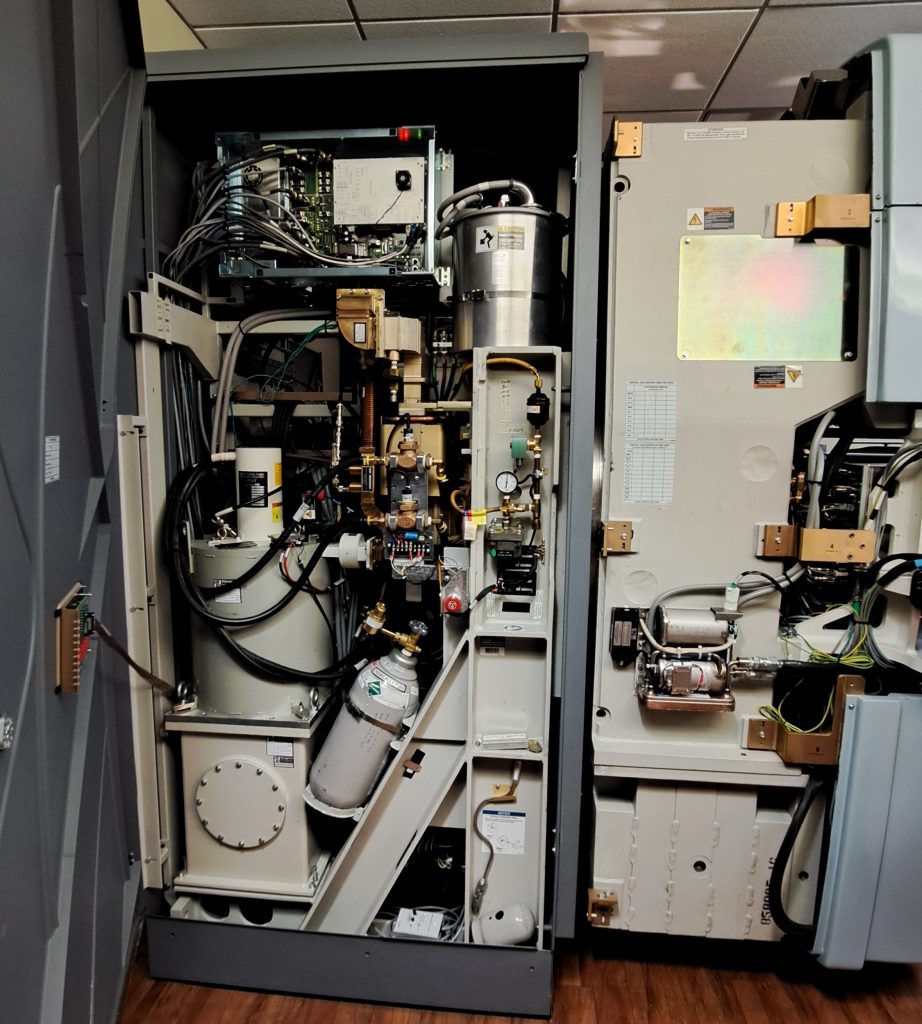
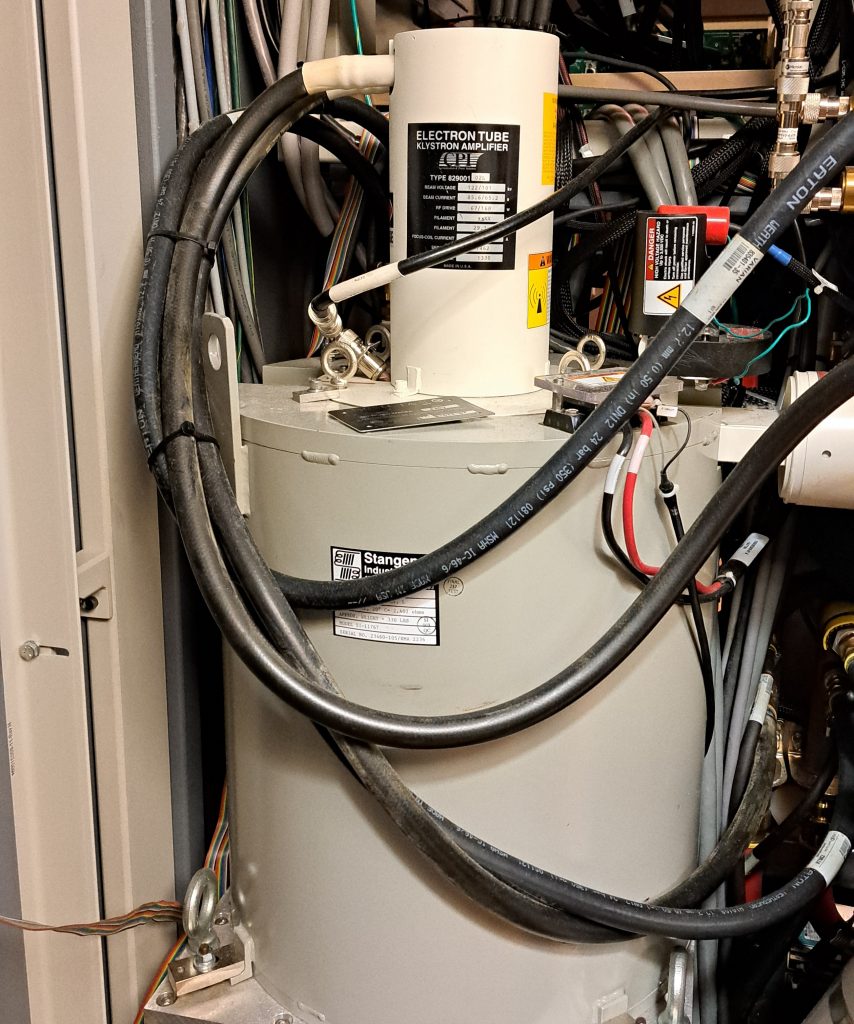
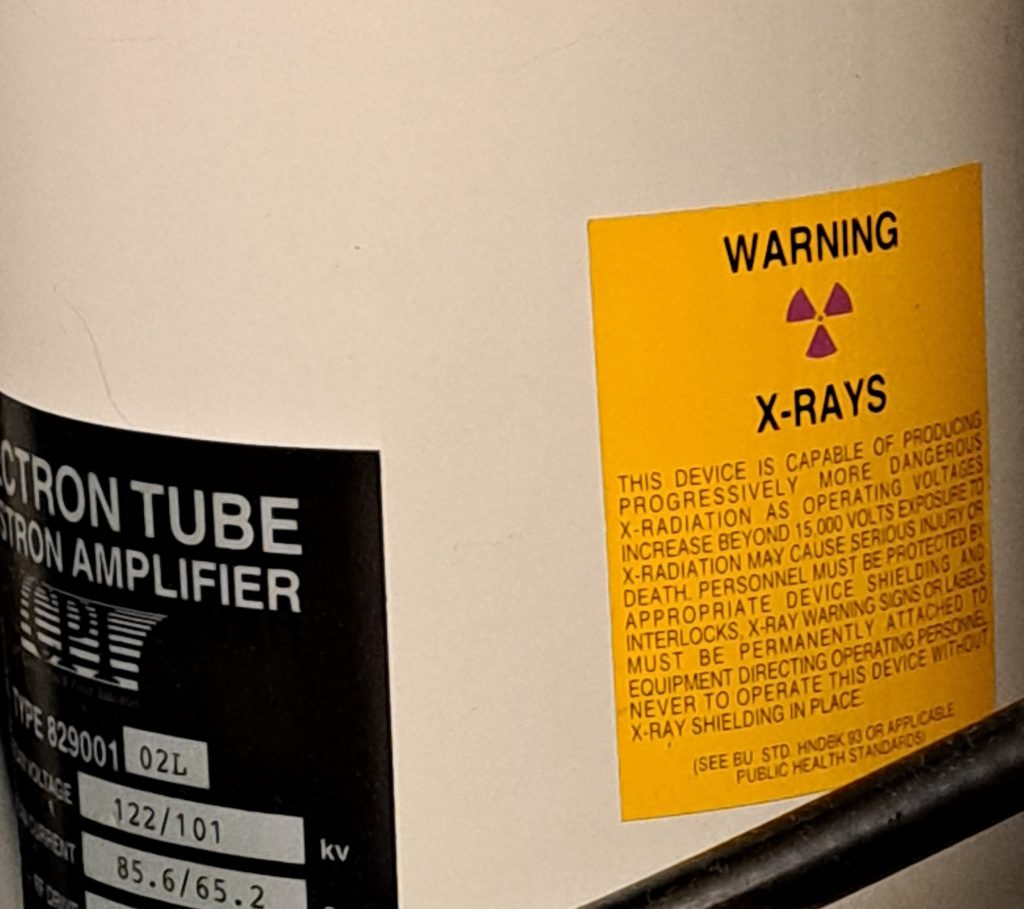



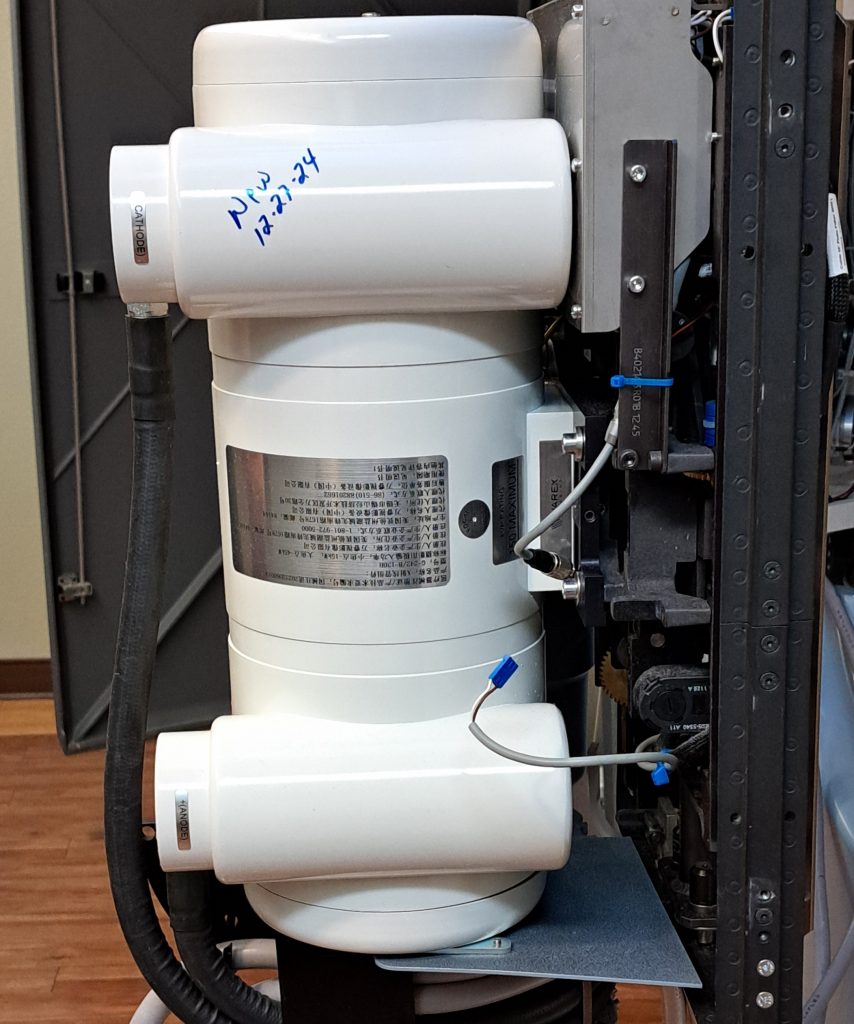
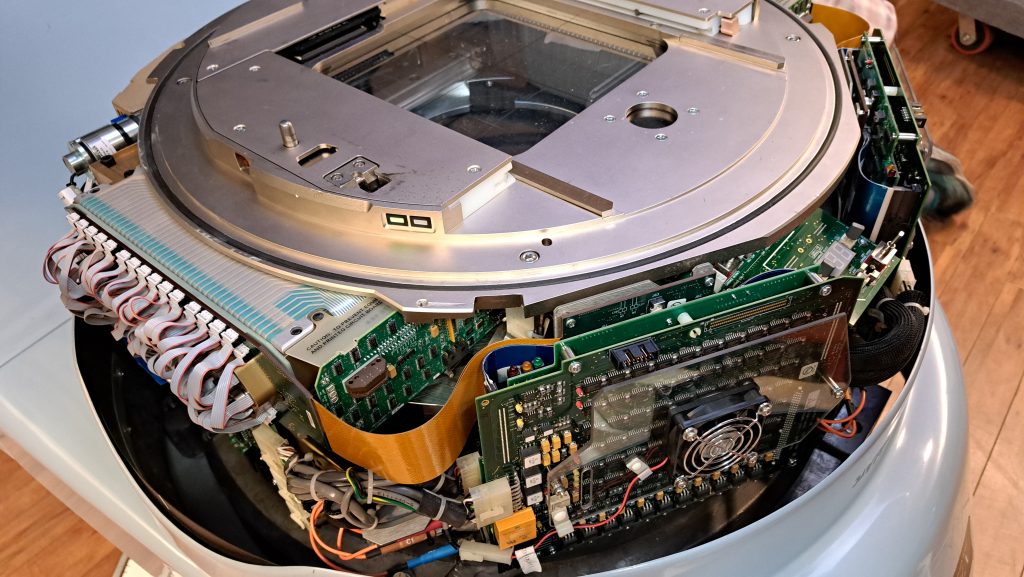
This is where the linear accelerator releases the cancer-killing X-rays.
The electron beam runs into a tungsten target and converts it into X-rays.
A plane with an opening in the tumor’s shape is placed on the lens, so the radiation is only aimed at the cancer. The beam would run as the machine spins around the patient, so the tumor at the center gets the most radiation for the longest while the surrounding body gets less radiation.
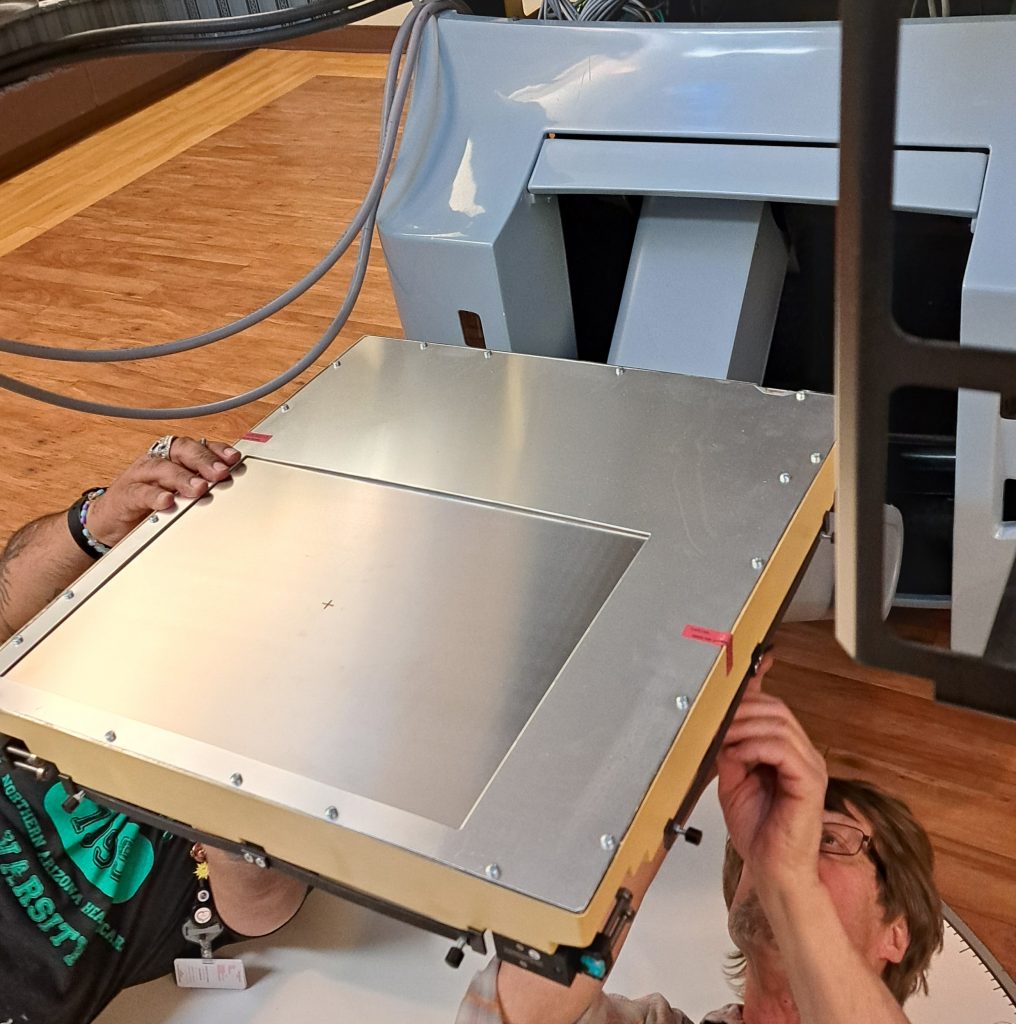

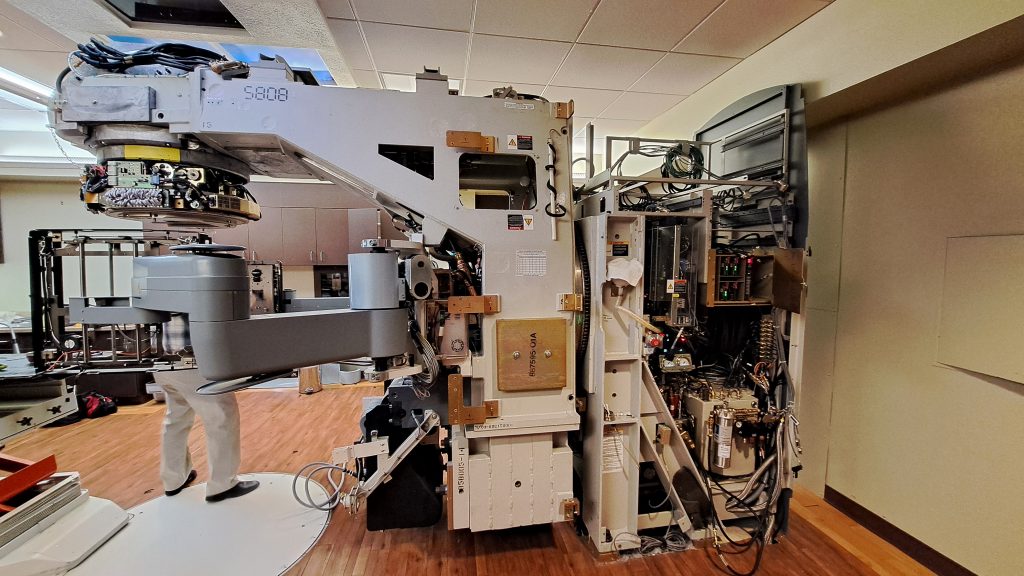
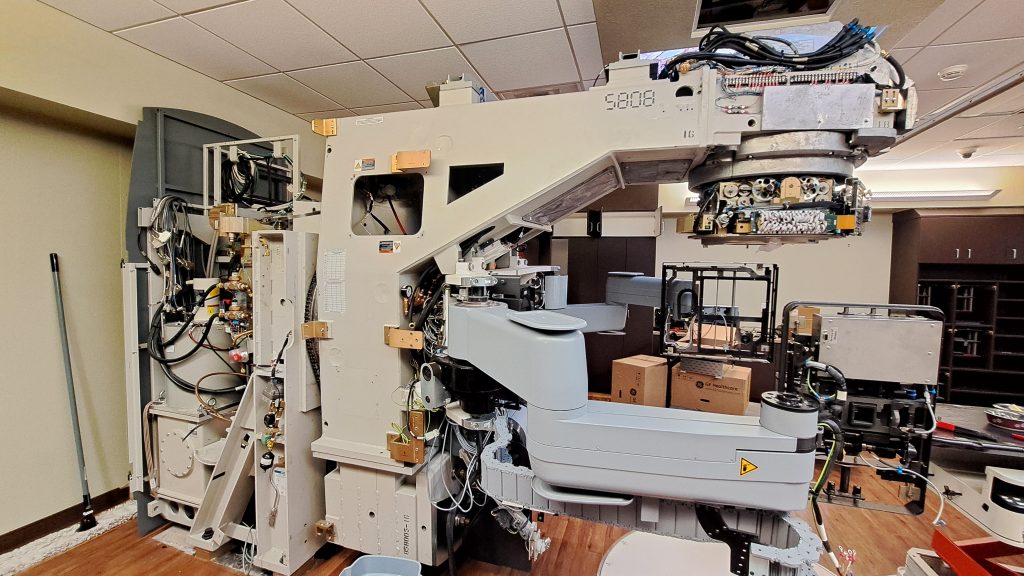

Comments:
All viewpoints are welcome but profane, threatening, disrespectful, or harassing comments will not be tolerated and are subject to moderation up to, and including, full deletion.